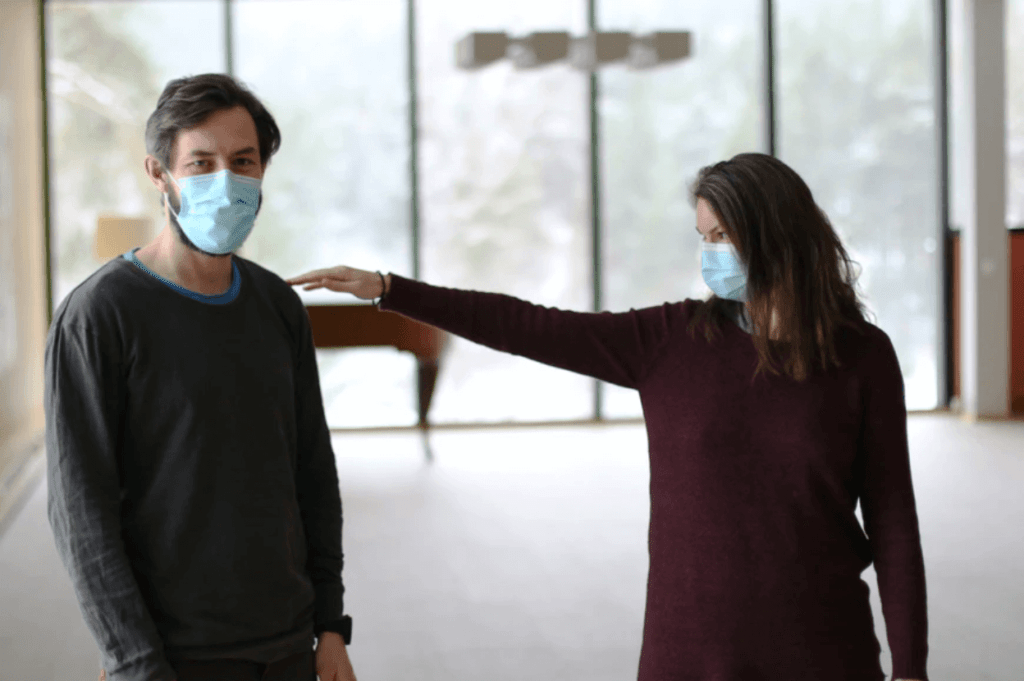A year ago, everyone’s lives changed. The COVID-19 pandemic struck as if from nowhere, changing the entire world irrevocably. Over a million people have died, and many more will. Fortunately, game-changing vaccines have allowed us to return to work, but because of the threat of breakthrough infections and unvaccinated carriers, social distancing must still be adhered to. Planning your company’s social distancing regulations can be complicated.

In this article, we’ll simplify it and present eight ways that you can easily enable social distancing at work for your employees:
Install Desk Screens
If your employees work in close proximity to each other, then it’s time to invest in desk screens. Choosing to buy Perspex screens for desks can protect your employees from infected saliva droplets. Every time that we talk, we expel droplets of saliva into the air. If you’re carrying COVID-19, then people who inhale the droplets that you release can become infected. The best way to prevent this in an office-based setting is through desk screens, which block the droplets from spreading. It’s important to make sure that you regularly disinfect and wipe down screens because COVID-19 can survive on hard surfaces.
Create a Seating Chart
Another way to introduce social distancing into your workplace and prevent viral transmission is by creating a seating chart. Work out (with the help of government guidance) how far apart your employees should sit, then rearrange and label furniture so that your employees know where to sit. On your office’s noticeboard, pin up a copy of the new seating chart so that your employees know where they’re supposed to be. If they adhere to the seating plan, then they will be much less likely to contract or spread COVID-19. Current government guidance suggests that 2m is a safe distance.
Rearrange Common Areas
In common areas, such as your office’s kitchen, lounge, and cafeteria, make sure that you rearrange furniture to promote safe social distancing. You should also put up signs that remind your staff of their duty to keep away from each other. If your staff disregards social distancing in your office’s common areas, they can still spread COVID-19.
It might be worthwhile delegating social distancing supervisory duties to a senior member of staff, such as a manager or a team leader. Incentivize enforcing social distancing on their colleagues to them, through rewards and increased responsibility. Make sure to punish staff who don’t adhere to social distancing.
One-way Traffic
A good way to introduce social distancing into your office is through a one-way traffic system. Instead of your staff being able to walk around your office, whichever way they like, have them adhere to a one-way system. A one-way system will prevent people from bumping into each other and meeting along the way. In combination with desk screens and a rearranged seating plan, one-way traffic systems can be very effective. Make sure to put down stickers and signpost the direction that people must walk, so that they don’t get confused.

Working from Home
If you’re not comfortable enforcing social distancing on your staff, or they’re not complying, you could offer them the opportunity to work from home (if that’s possible). Working from home is the safest option for everybody, not to mention the most convenient. In our modern digital world, technology makes everything much easier. You can still conduct meetings, conference calls, and interviews through video chat services. Your staff can still work from home, using Cloud systems and SaaS.
For employees who can’t work from home and must come into the office, you can make the workplace safer by providing Phoenix onsite business Covid testing. These tests are a preventative measure that can detect an active case of COVID-19 before it has the chance to spread. Tests can be conducted at the door and return results in as little as 15 minutes for everyone’s peace of mind.
Mindfulness
Even if you introduce thousands of rules, if your staff aren’t mindful about their behavior, then viruses can still spread. You need to teach your staff to think about the consequences of their behavior and appropriate behavior is, with the pandemic in mind. Things such as sharing glasses, mugs, and cutlery are no longer acceptable, for example.
A good way of ensuring that your staff is mindful of their behavior is through online classes, seminars, and talks. You could consider hiring a mindfulness coach to run sessions with your staff during the working day. Mindfulness will also benefit your staff in their approach to work, making them more diligent, more committed, and more confident.
PPE
PPE [personal protective equipment] is a very important part of keeping your employees safe. Even with all of the previously mentioned measures introduced, viruses can still spread. By having your staff wear PPE, they will be doubly protected.
Masks are by far the most effective type of PPE because they prevent people from spreading viral droplets. They also stop people from unintentionally inhaling them, which most people do in conversation with one another. Masks are very affordable to buy, although you should advise your staff to bring in their own so that they don’t have to put their hands in a box that other people have dipped into.
Gloves are also very effective, especially when they’re used in combination with masks. Another very common way for people to pick up viruses is by touching objects that are infected, then touching their faces. Gloves are, like masks, also very affordable.
Practicing Hygiene
If your staff doesn’t practice good hygiene, then no amount of social distancing will save them. You need to create a culture of cleanliness among your staff. Increasing your staff’s cleanliness minimizes the chances that anybody will fall sick from COVID-19 or any other diseases.
Most people recommend distributing antibacterial hand gels among your staff. These hand gels can kill up to 99% of germs and bacteria, including coronaviruses. They’re affordable and can be purchased in bulk. At the start of every week, you should put a bottle on each of your employees’ desks. Make sure to tell them to use it before and after they touch door handles, shared objects, or go in and out of the office.
It’s also crucial that you regularly deep clean your office, to eliminate any germs or viruses that could be lingering. As we mentioned earlier, coronaviruses can live on surfaces for a long time.
If you want to keep your staff safe, then you need to implement social distancing. Each workplace is different, but you can use these tips as a blueprint for protecting your staff. Make sure to take them all into consideration.



